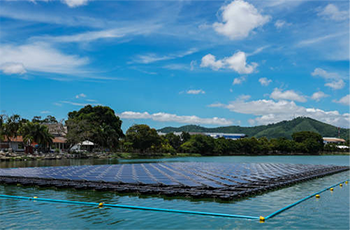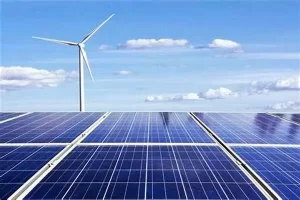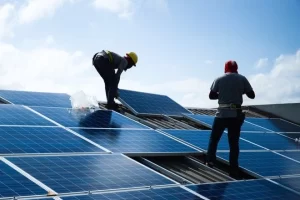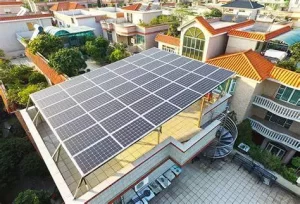Exploring Island Microgrid Installation: A Path to Sustainable Energy Independence
In today’s world, as we strive for a more sustainable future, the exploration of innovative energy solutions becomes crucial. Islands, with their unique geographical characteristics and energy challenges, offer an ideal testing ground for the implementation of microgrids. This article delves into the significance of island microgrid installation and how it paves the way for sustainable energy independence.
Islands often face significant energy challenges. Their isolation from mainland power grids makes them highly dependent on external energy supplies, which can be costly and unreliable. Additionally, the transportation of fossil fuels to islands contributes to environmental pollution and increases the carbon footprint. These challenges make the pursuit of sustainable energy solutions a top priority for island communities.
One of the most promising solutions is the installation of island microgrids. A microgrid is a localized power generation and distribution system that can operate independently or in conjunction with the main grid. In the case of islands, a microgrid can integrate various renewable energy sources such as solar, wind, and ocean energy.

Solar power is an excellent option for islands with abundant sunlight. Solar panels can be installed on rooftops, open spaces, and even floating platforms to generate electricity. Wind turbines can also be utilized in areas with strong wind resources. Offshore wind farms can provide a significant amount of clean energy to islands. Ocean energy technologies, such as tidal and wave power, are still in the early stages of development but hold great potential for future use.
Energy storage is a critical component of island microgrids. Batteries can store excess energy generated during periods of high production and release it when needed. This helps to ensure a stable power supply even when renewable energy sources are intermittent. Pumped hydro storage and other advanced storage technologies can also be considered depending on the specific needs and resources of the island.
The control and management system of an island microgrid plays a vital role in optimizing energy generation and consumption. Smart grid technologies can be employed to monitor and control the flow of power, balance supply and demand, and ensure the reliability and efficiency of the system. This includes the use of advanced metering infrastructure, demand response programs, and energy management software.
Island microgrids installation brings numerous economic, environmental, and social benefits. Economically, it can reduce energy costs by reducing dependence on expensive imported fuels. It also creates opportunities for local job creation and economic development through the installation and maintenance of renewable energy systems. Environmentally, it helps to reduce carbon emissions and protect the natural beauty of islands. Socially, it enhances energy security and improves the quality of life for island residents by providing a reliable and sustainable power supply.
Several successful island microgrid projects around the world serve as inspiring examples. For instance, the island of Ta’u in American Samoa has implemented a solar-plus-battery microgrid that provides 100% of the island’s electricity needs. The project has not only reduced energy costs but also increased the resilience of the island’s power supply.
To promote the island microgrids installation, supportive policies and regulations are needed. Governments can provide incentives for renewable energy development, such as tax credits, grants, and feed-in tariffs. They can also facilitate the integration of microgrids into the existing power grid and establish clear regulatory frameworks for their operation.
In conclusion, island microgrid installation represents a significant step towards sustainable energy independence. By integrating renewable energy sources, energy storage, and smart control systems, islands can achieve a reliable and clean power supply. This not only benefits the environment but also enhances the economic and social well-being of island communities. As we continue to explore and develop innovative energy solutions, island microgrids offer a promising path forward for a more sustainable future.
Contact us
- Email:[email protected]
- Tel: +86 13651638099
- Address: 333 Fengcun Road, Fengxian District, Shanghai
Get A Quote Now!
Related product links are available directly
Site storage products:Site storage products 归档 – (energystoragecontainer.com)
Lithium Battery:Lithium Battery 归档 – (energystoragecontainer.com)
Read more

Unveiling Photovoltaic+Energy Storage: Four Major Application Scenarios Leading the Future of Energy
In this way, the energy landscape is evolving, and one of the most thrilling developments in renewables is the integration of photovoltaics energy storage.

From Theory to Practice: Four Methods for Estimating Photovoltaic Power Generation
Photovoltaic power generation has become an essential part of modern energy solutions, particularly in home solar systems and distributed power applications

Rack-Mounted Lithium Iron Batteries: Creating Efficient and Reliable Energy Storage Solutions
When it comes to modern energy solutions, rack-mounted lithium iron batteries are taking center stage in a variety of industries. Whether you’re powering data centers, stabilizing energy for households, or keeping critical systems online at 5G base stations, these batteries have become the unsung heroes of our electrified world.

Late Night Energy Saving Tips: How to Maximize Electricity Savings During Off-Peak Hours
With rising energy costs, homeowners are increasingly exploring innovative ways to save on their electricity bills. One effective approach is utilizing off-peak hours—times when electricity rates are significantly lower due to reduced demand.
